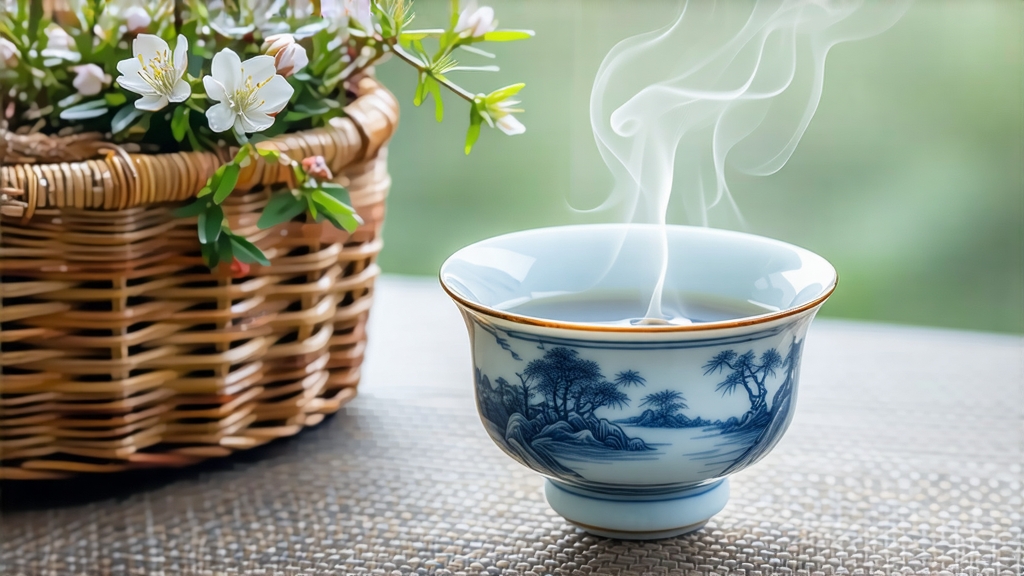
Among the six great families of Chinese tea, white tea is the least theatrical yet the most elusive, and within this quiet lineage Yin Zhen—Silver Needle—stands as the luminous apex. International drinkers often meet white tea through bagged blends labeled merely “bai cha,” but to taste Silver Needle is to witness the first pale ray of dawn over the Min River, when the air is so clean that flavor arrives as a whisper. This essay invites you to follow that whisper from 10th-century Song dynasty courts to your own teapot, tracing history, terroir, craft, and the subtle choreography that coaxes fragrance from fuzz.
-
Historical shimmer
The first written record appears in 1064 CE in Song emperor Huizong’s “Daguan Treatise on Tea,” where tribute cakes of “white buds” were pressed with dragon molds. Those cakes vanished when Ming Hongwu emperor outlawed compressed tribute in 1391, but the buds did not; they simply slipped into the mountain hush of northern Fujian. By the late Qing, Fuding and Zhenghe counties were shipping loose-needle tea down the Tea Road to Canton, then to Europe, where Victorian apothecaries praised its “cooling property.” Silver Needle thus carries a double aura: imperial antiquity and early-global wellness chic. -
Terroir and cultivar
Authentic Silver Needle is picked only in Fujian’s two core micro-regions—Fuding’s Taimu mountain range and Zhenghe’s high granite ridges. The bushes are not generic camellia sinensis but specific clones: Fuding Da Bai (“big white”) and Zhenghe Da Bai, whose leaves contain 4.7 % amino acids, almost double that of Longjing green. Spring mornings below 18 °C slow oxidation enzymes, allowing the tea to keep its ivory color while developing a nectar-like sweetness. The downy trichomes that cloak each bud are rich in cis-3-hexenol and geraniol, precursors to the honey-lilac bouquet that emerges during long wither. -
Harvest ritual
Plucking begins when the apricot trees blossom, usually between 15 March and 10 April. Only the unopened leaf bud, 1.5–2 cm long and shaped like a barley grain, is taken. A skilled picker gathers roughly 2,000 buds per hour; 30,000 buds—an entire day’s work for three people—yield just 500 g of finished tea. The buds must be transported in shallow bamboo baskets lined with banana leaf to prevent compression; any bruise will later oxidize into an unsightly red tip, disqualifying the batch from top grade. -
Craft: the art of doing almost nothing
White tea’s minimalism is deceptive. After harvest the buds undergo only two steps: withering and drying. Yet each step is a meditation on moisture and air.
Withering: Buds are laid 2 cm thick on bamboo trays stacked in a sun-lit corridor. For 36–48 hours they breathe, losing 80 % moisture while enzymatic reactions generate floral volatiles. The master’s judgment is tactile: when a bud snaps rather than bends, withering is complete.
Drying: Traditional charcoal kilns hold temperature at 40 °C for three brief minutes, just enough to fix the aroma without caramelizing sugars. Modern producers may use electric ovens, but the best needles still pass over a final charcoal ember to acquire a subtle smoky echo reminiscent of distant pine.
-
Grading and aging
Unlike green tea, Silver Needle improves with age. The Chinese market distinguishes between “new needle” (harvest year) and “aged needle” (three-plus years). Aged buds darken to pewter and develop notes of dried longan and medicinal herb; polyphenols polymerize, yielding a smoother, thicker liquor prized in Cantonese “cooling” traditions. Top-grade new needle is judged by three visible traits: uniform silver color, intact “spear” shape, and a dense down that floats like pollen when dropped into a glass of cold water. -
Brewing: the quiet pour
Silver Needle is forgiving but not careless; its delicacy rewards restraint.
Water: spring or filtered, 80–85 °C. Boiling water scalds the down and produces astringency.
Utensils: a tall glass pitcher or porcelain gaiwan (120 ml) allows vertical space for the buds to dance.
Ratio: 3 g (≈ 60 buds